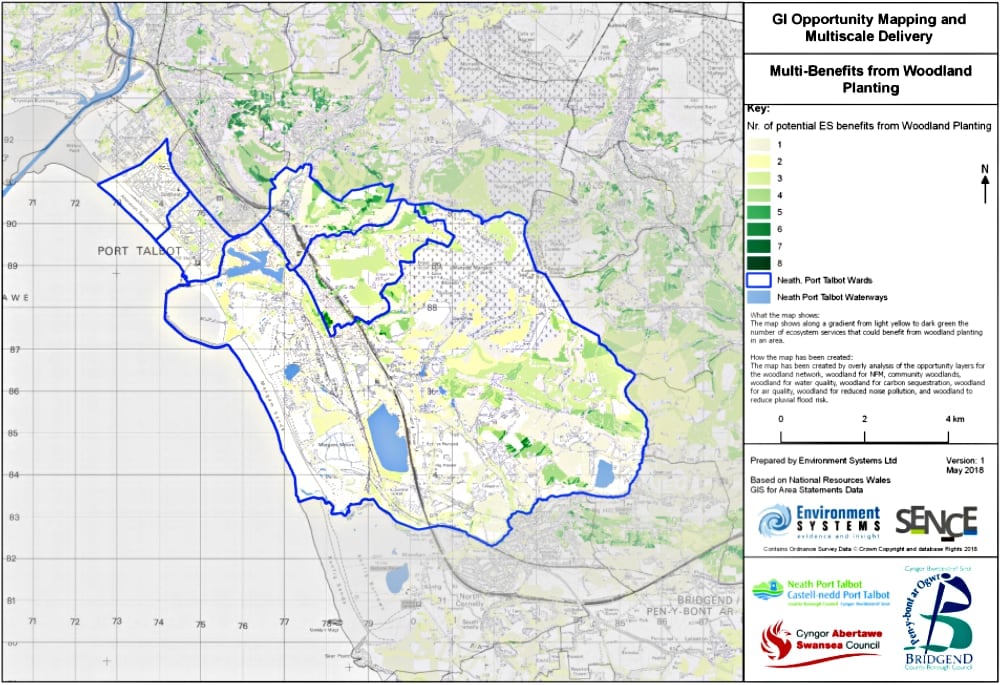The Wellbeing of Future Generations (Wales) Act 2015, Planning (Wales) Act 2015, and Environment (Wales) Act 2016, set out Wales’ approach to planning and managing natural resources at national and local levels, through sustainable management of natural resources and sustainable development. For urban areas, this legislation includes a focus on Green Infrastructure (GI), which can deliver benefits from a wide range of ecosystem services, from human health and well-being to natural flood management.
A good example of Welsh Local Authorities (LA) acting to further enhance the management of their GI assets has occurred in South Wales, where action arising from Public Service Board partnerships led to the development of a regional GI project. LA officers for Neath Port Talbot County Borough Council, Swansea Council, and Bridgend County Borough Council have come together with Natural Resources Wales (NRW) and Public Health Wales to develop a framework for delivery of GI. Environment Systems was commissioned to identify GI opportunities for the three local authorities by incorporating locally relevant data and scrutiny of national scale ecosystem service mapping carried out for NRW under the project GIS for Area Statements. Multi-opportunity mapping was one of the key outputs of this project; these maps show areas where establishing or restoring a natural habitat, such as woodland, has the potential to enhance multiple ecosystem services.

In the months since the delivery of these maps, Neath Port Talbot County Borough Council has used the multi-opportunity maps to identify locations for action on the ground. In the ‘multiple benefits from woodland planting map (above) they identified an area of council-owned land that was modelled to benefit from enhanced tree cover. Field staff could validate that the area had a strong demand for the services that would benefit from tree-planting for example through a reduction of overland flow and improved air quality. In addition, through a community engagement process, a local improvement plan was developed, including planting and access improvements, which is being used to inform a programme of improvement works at the site. This is a great example of how Environment Systems’ ecosystem service modelling can make a real difference to local communities through proactive land management by local councils. Similar projects have taken place in Swansea and Bridgend, delivering a range of GI improvements across the region.